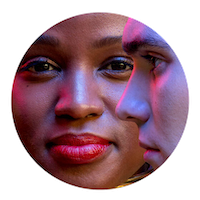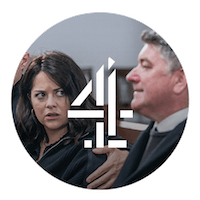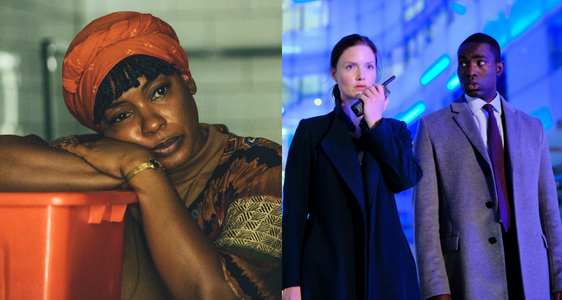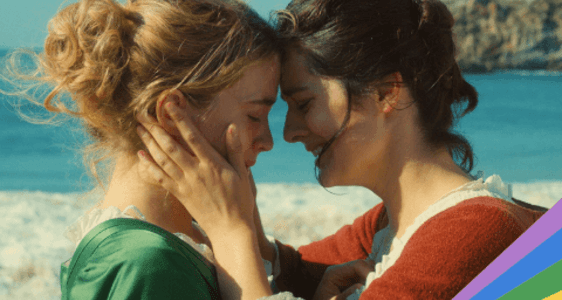
A brief history of Black television
The origins of Black History Month
Carter G Woodson, the son of former slaves, was born in Virginia in 1875. He had little access to quality education and job opportunities, so he worked in the mines until he could save enough money to go to one of the few high schools for Black students. From there, he went on to study History at Harvard and in 1926 sent out a press release marking the first ever Black History Week in the US. Woodson went on to be dubbed “The Father of Black History”.
Now a month instead of a week, Black History Month is celebrated across the UK too, in October, and offers a wealth of education on the matter, for all ages. Check out the official site for more information.
Today we'll be diving into the history of people from African and Caribbean backgrounds in television, how harmful stereotypes were used to portray Black people, and the ways in which television has evolved over the years to be more inclusive and sensitive, as well as ways it still needs to improve.
The start of Black representation in television
Speaking on Black television through the ages, Lecturer Adrien Sebro at the University of Texas said “As I got older, I realised that film and TV are crucial for communication, and they hold significant political power. I want to always encourage whomever I come across to be conscious of that power and to use it responsibly.” He continues: “Television was actually called the ‘citizen machine,’ and it was a means of controlling America, showing what living in America was like, which was white middle class.” Because of this, America evidently used people of African and Caribbean backgrounds in a multitude of ways that created a negative narrative around them. The first being a radio show called Amos ‘n’ Andy, in which the original version starred two white men in blackface, “acting as what they thought to be poor and Black”. It was later adapted for television with an all-Black cast, however, was still controlled and run by White people and so couldn't convey an accurate representation.
Sebro went on to talk about the 70s and how there was a shift in perspective, it seemed as if things were looking up. “It wasn’t until the 1970s where you see television come to fruition talking about real social issues, and particularly it comes to black television shows in the 70s. Sitcoms like Sanford and Son, Good Times and The Jeffersons look at black communities and do a better job of showing them in a realer light. These are shows about families trying to run a business and trying to make ends meet.” However, there were chilling connotations to this surge of Black people in television, in that the majority of White people were not happy to see it, with some even threatening the actors’ lives. Even so, the actors persevered “because they realised something larger than themselves, and because of their sacrifices we have this history of how we see and enjoy television today.”
Blackface in television
For years, blackface has been used by White people in television to portray a caricature of a Black person, and by the middle of the 19th century, minstrel shows were considered a distinctive art form in the US, only ending in the UK in 1981. But blackface didn’t stop there, and to this day is still used widely in other cultures, as well as some American and UK television shows over the past twenty years.
In recent years, early 2000s UK comedy series like The League of Gentlemen, The Mighty Boosh, Little Britain and Bo Selecta have been pulled from popular streaming services all together due to the nature of using blackface, while other sitcoms like Always Sunny in Philadelphia and The Office (US) have had certain scenes or episodes pulled.
But it wasn’t just White people that used blackface. Some Black actors starting around the 19th century would also appear as part of the minstrel shows, as they felt it was a step forward to be seen in front of a White audience. And in 1975 Lenny Henry appeared in the then popular BBC series The Black and White Minstrel Show purely in an effort to break into the industry by any means. So, in over one hundred years, little progress had been made to allow for Black actors to work in roles that would actually represent them. This restriction of opportunities for Black people in the entertainment industry carried on for quite some time until more recently in the 1990s when there was a surge in popularity in Black television.
Black television in the 90s
Arguably one of the most popular sitcoms of the nineties was The Fresh Prince of Bel Air, starring Will Smith, a show about a young Black boy from West Philadelphia who was forced to move to a rich neighbourhood to live with his Aunt and Uncle in a lavish house - while it wasn't an accurate representation of the majority of Black families, it was certainly a huge step forward.
"That the series aired at a time when the battle for Black rights was the topic of widespread and heated discussion — particularly in light of the Rodney King beating and the subsequent Los Angeles riots — gave its message that much more gravitas and power".
Alongside that was In Living Colour, Living Single and Martin. These American sitcoms changed the way Black people were previously portrayed in other sitcoms starring mostly White people. But the truth of the matter wasn’t as much about making a change, so much as it was about profiting off what was popular and what would sell at the time. And things haven’t much changed today. Some television companies are known for cancelling a show after their first season if the show doesn’t perform in the ratings department, but this can be somewhat problematic as some shows increase in popularity over time and nowadays story arcs aren't given the chance to properly develop. One of the bigger issues of today comes from behind the camera, though.
Seen and not heard
22% of people from minority ethnic backgrounds were seen on UK television screens last year, with as little as 12.3% offscreen contributions (writers, directors, producers, etc.). And while these numbers are increasing year on year, it’s important to note that in London, where most shows are produced, the population of people from minority ethnic backgrounds (as of last year) was made up of 40.2%*. This lack of representation behind the camera can completely alter the direction of a production, can influence how characters are portrayed and thus can be detrimental to the entire show. It’s therefore important to work on today, together and inclusively, to ensure that we get to a future that can make everyone feel welcome.
“The history of black TV and film are important for me and my teaching because more often than not we as viewers consume media without question. I believe it’s important to question everything we view with regard to black culture and how that imagery has changed over time. From there, we can be more conscious of black history and what shapes popular understanding of black culture.”
Links:
*https://www.dailymail.co.uk/news/article-8834021/BAME-people-represented-TV-new-research-suggests.html
https://moody.utexas.edu/news/black-television-through-years
https://www.firstpost.com/entertainment/revisiting-the-fresh-prince-of-bel-air-a-flawed-yet-vital-masterpiece-for-these-airbrushed-times-8664231.html
https://www.blackhistorymonth.org.uk/
Become a telly expert |

|

|
|
Get the best TV picks of the week from our team of telly experts |
Find out what's new on your favourite channels every week |
Follow usGet the latest telly news and updates PLUS access to competitions and exclusive content |

|

|

|



